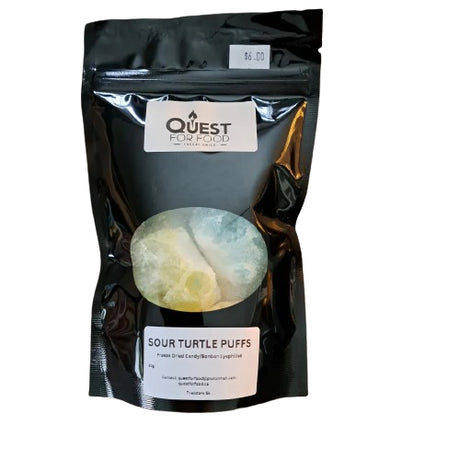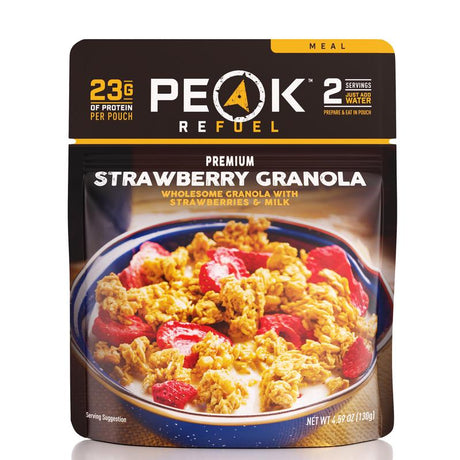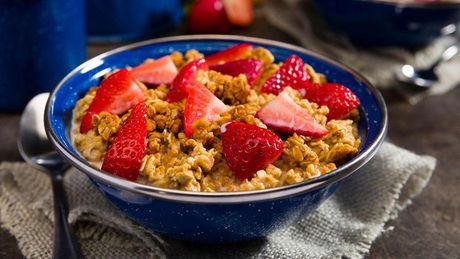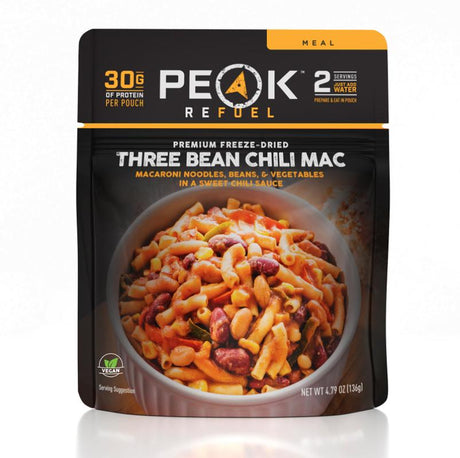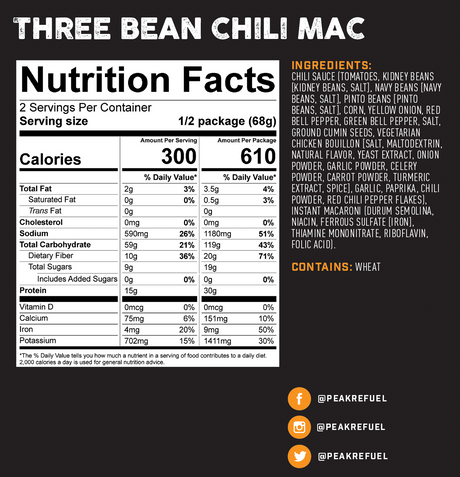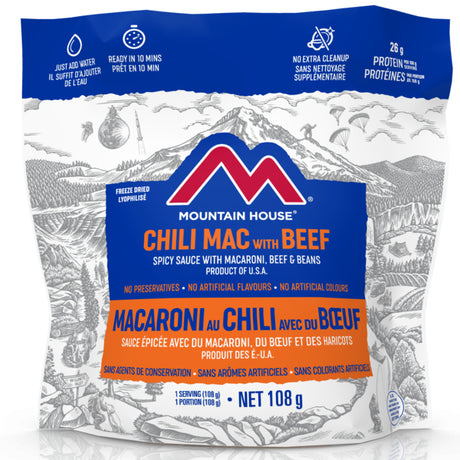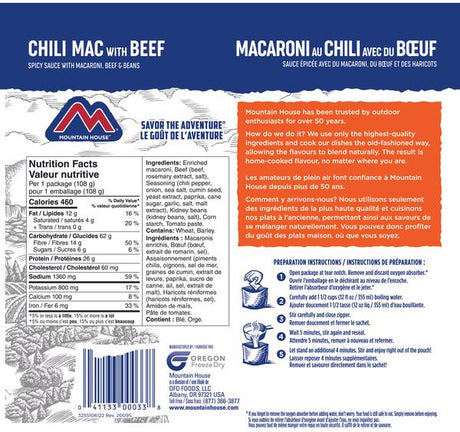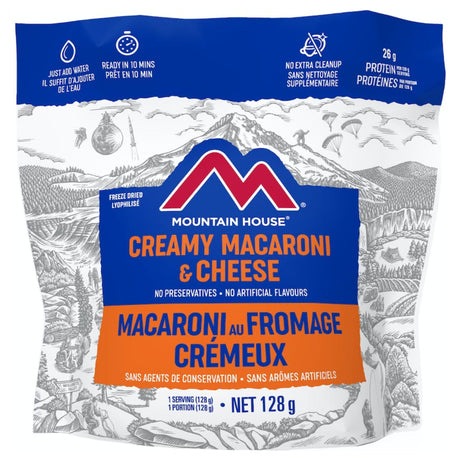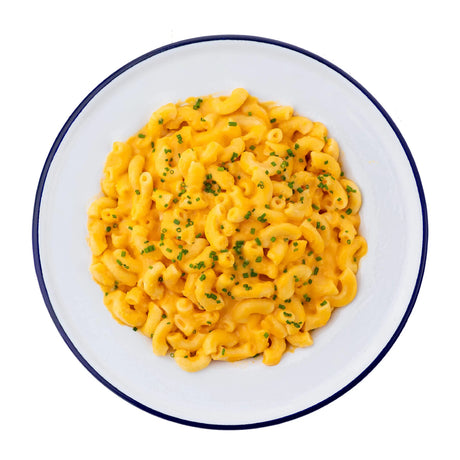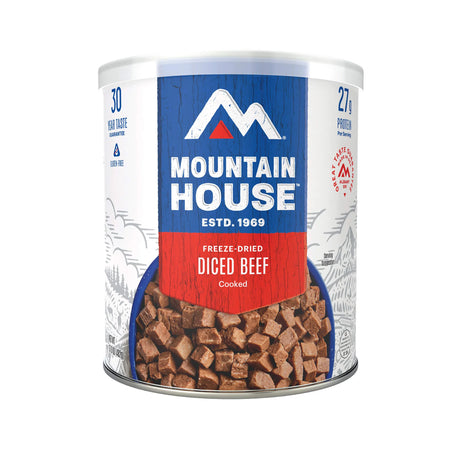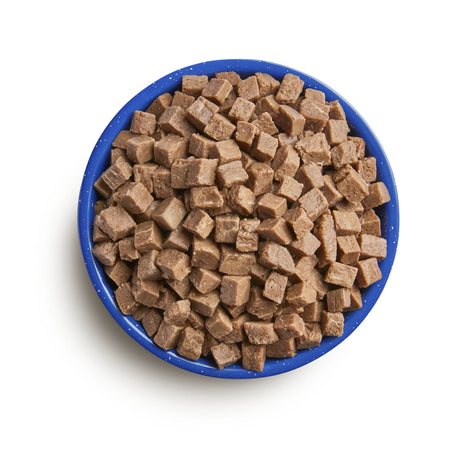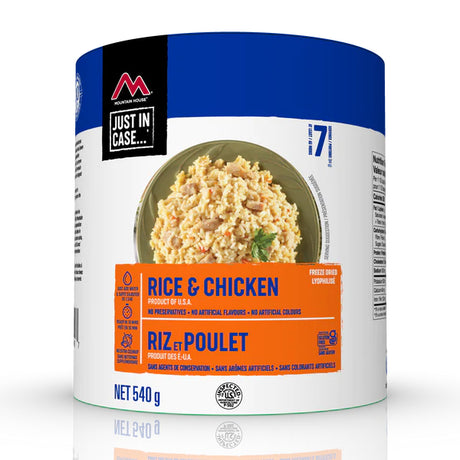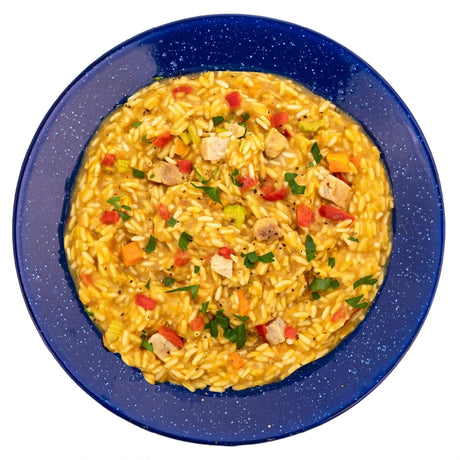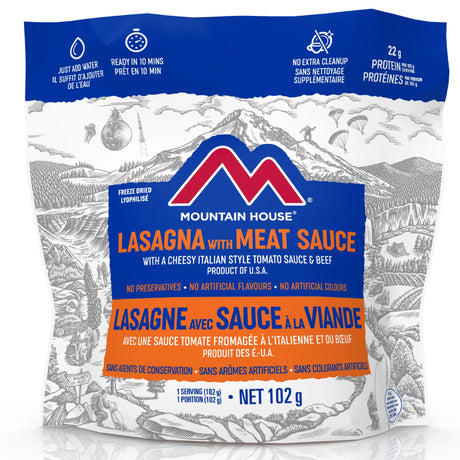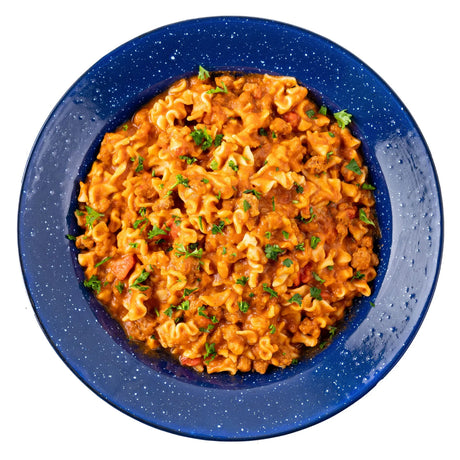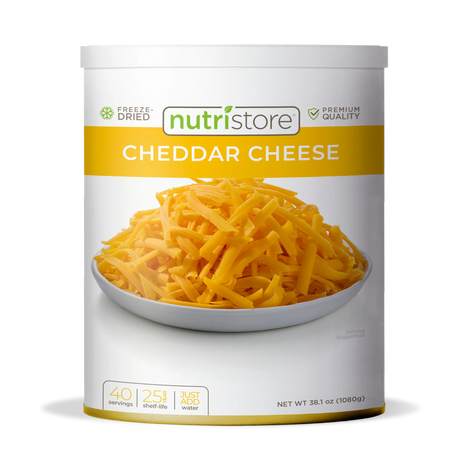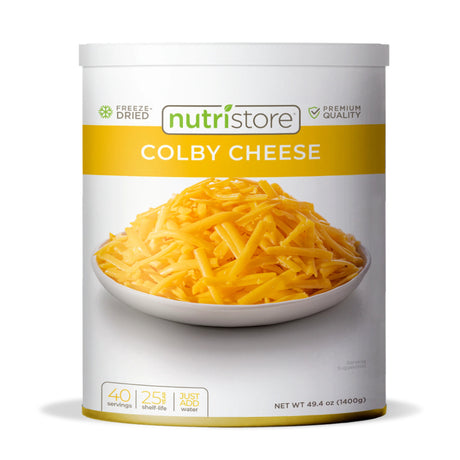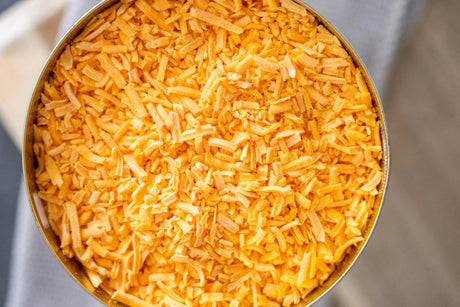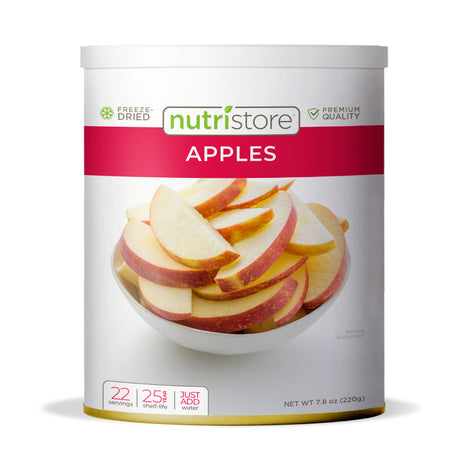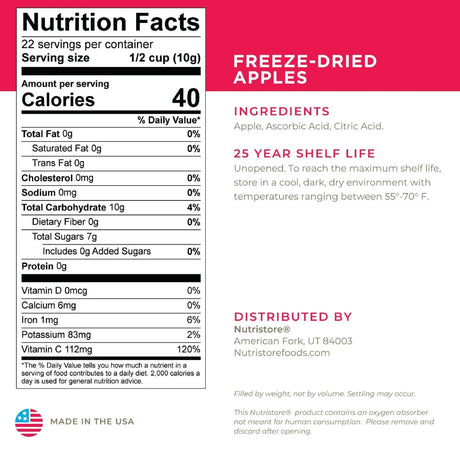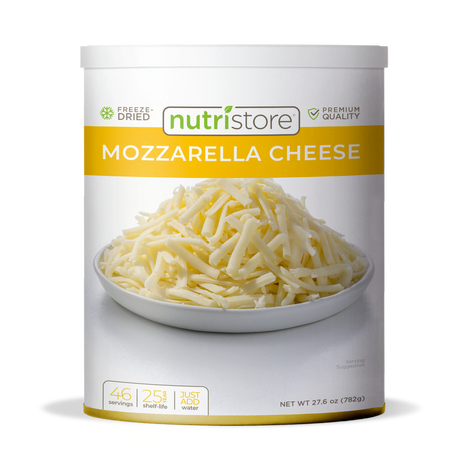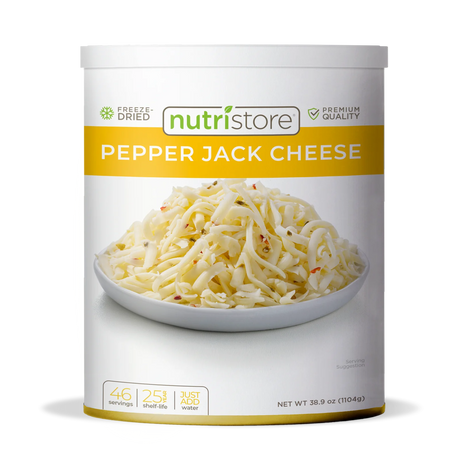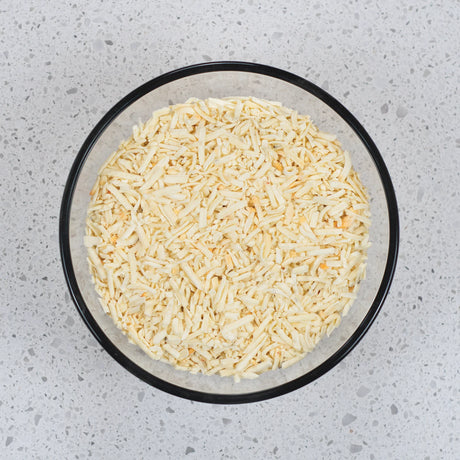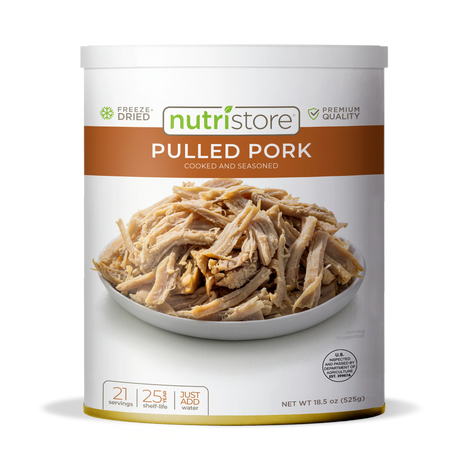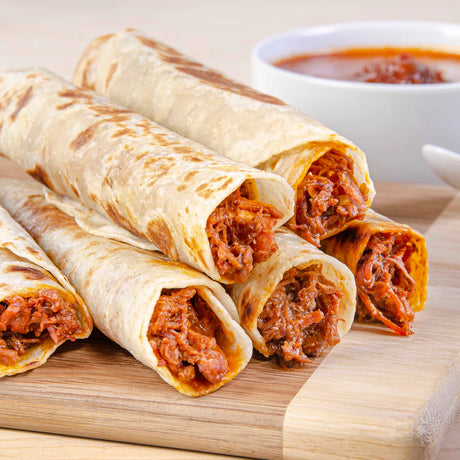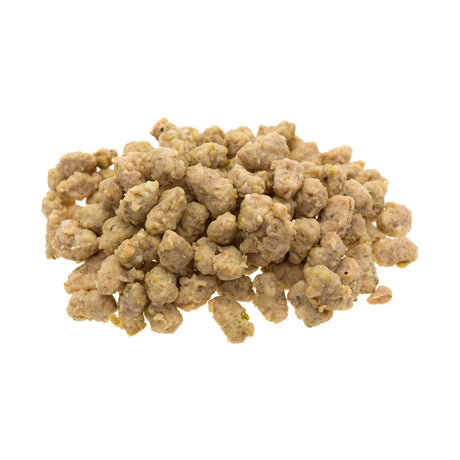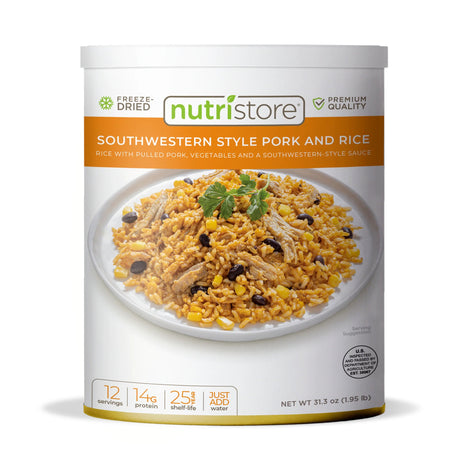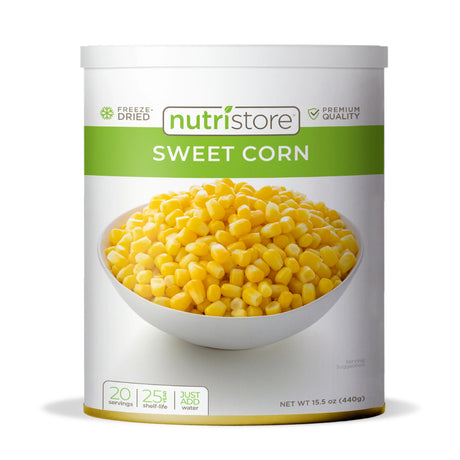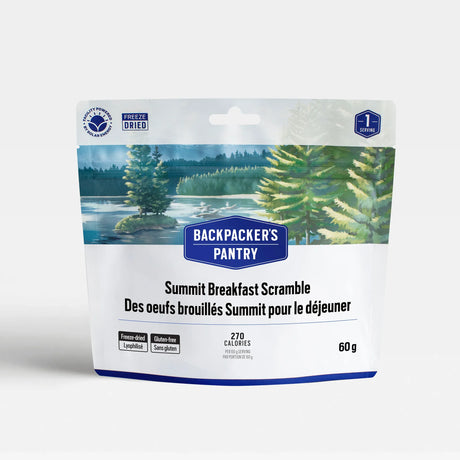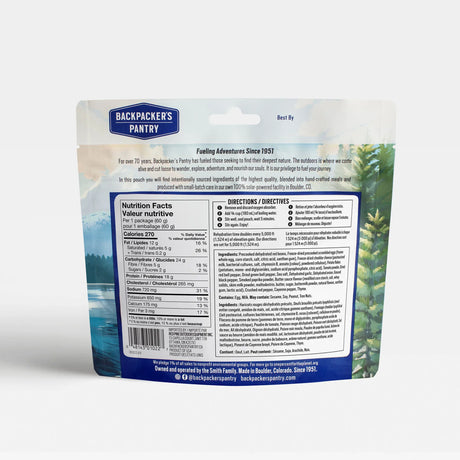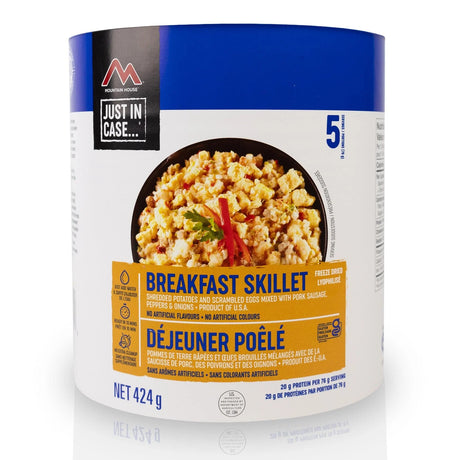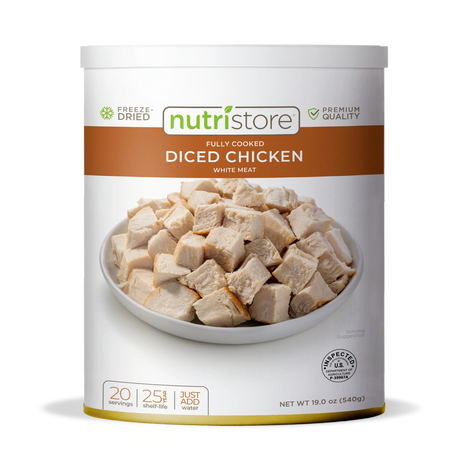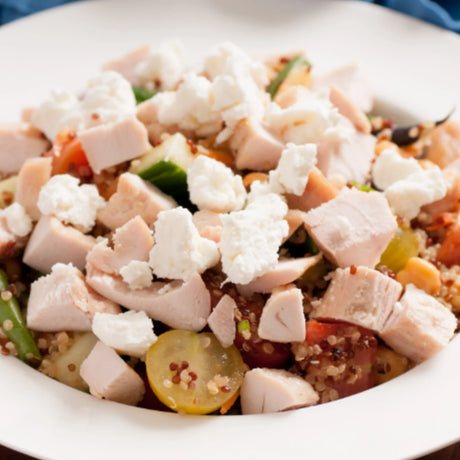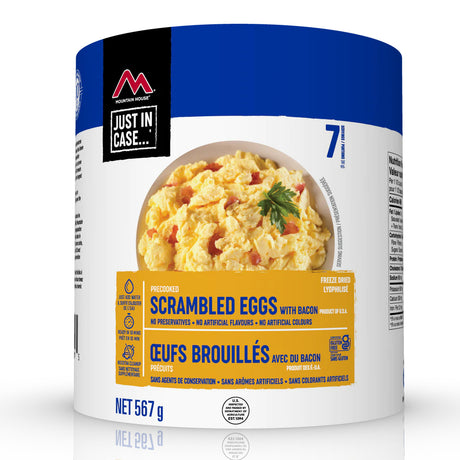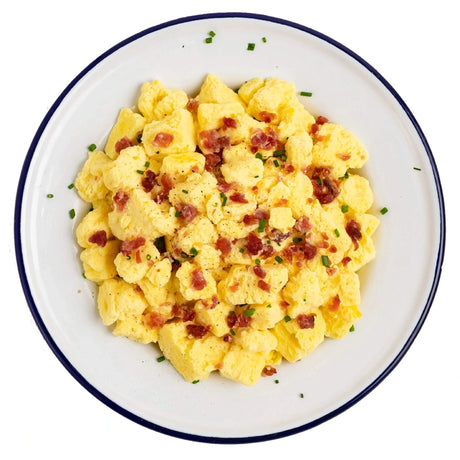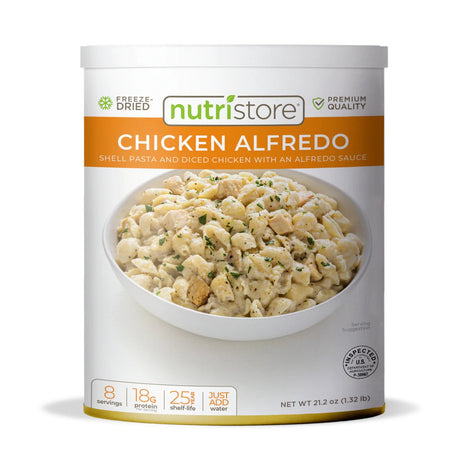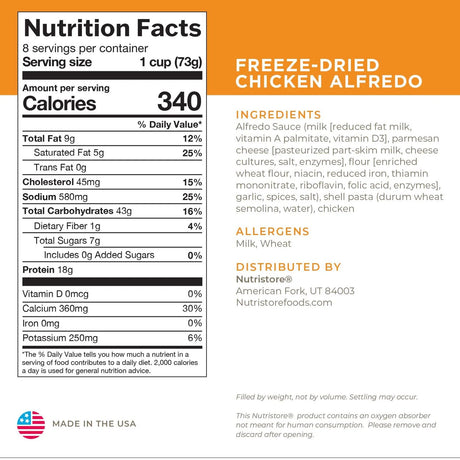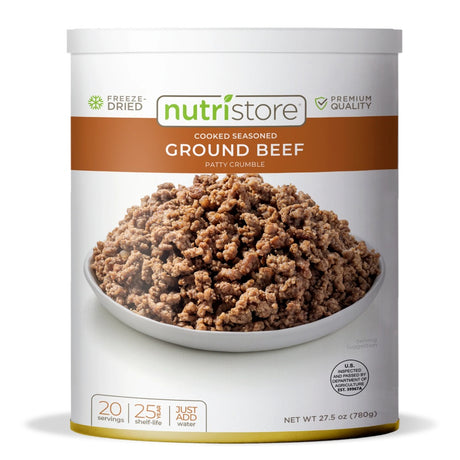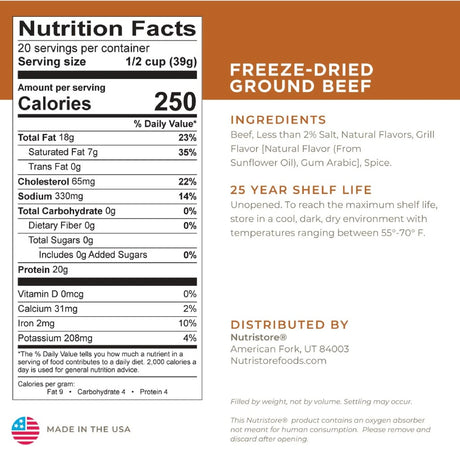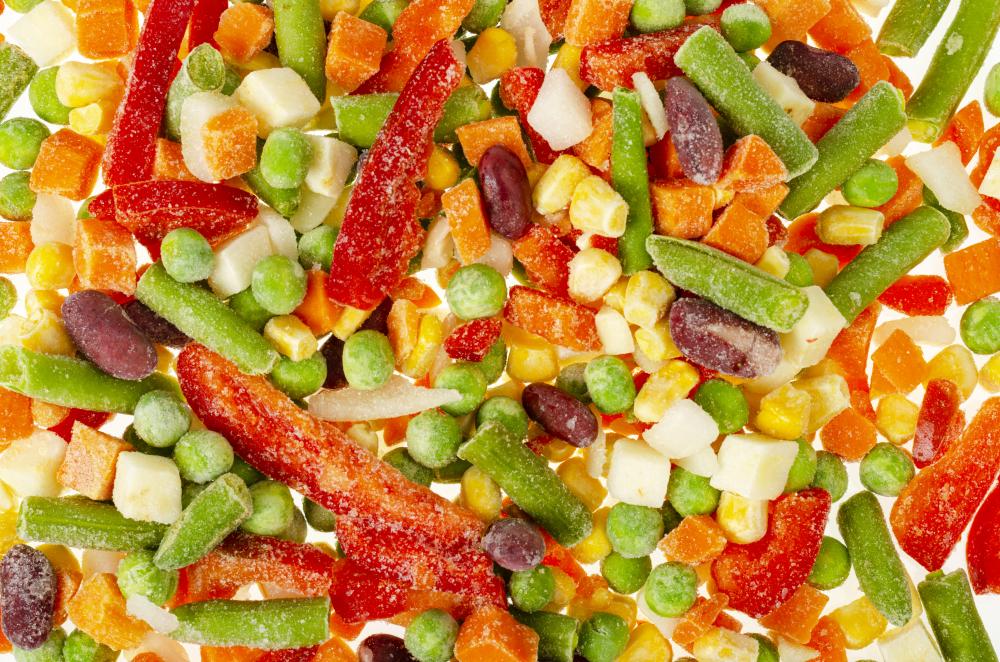
Exploring the World of Freeze Dried Food
As a representative of Canadian Preparedness, I've always been fascinated by the efficiency and nutritional value of freeze dried food. These meals, which have a long-lasting shelf life, are particularly advantageous for those seeking reliable sustenance in emergencies or during adventurous outdoor excursions.
Freeze dried food is known for its lightweight nature, making it perfect for hikers, campers, and preppers alike. The process of freeze drying preserves the food by removing moisture, which prevents spoilage and extends its shelf life significantly.
In our busy lifestyles, having access to convenient and nutritious food options is crucial. Freeze dried meals offer an ideal solution, providing delicious and wholesome meals that can be prepared in minutes by simply adding water.
The Magic Behind Freeze Drying
The freeze drying process is an extraordinary method of food preservation that retains flavor, texture, and nutritional value. By rapidly freezing the food and then reducing the surrounding pressure, ice transitions directly from a solid to a vapor without going through a liquid phase.
This process ensures that the food's cellular structure remains intact, preserving its original taste and nutritional content. As a result, when rehydrated, freeze dried food can closely resemble its original state, making it a favorite choice for outdoor enthusiasts and emergency preppers.
Benefits of Freeze Dried Food
One of the key advantages of freeze dried food is its extended shelf life. At Canadian Preparedness, we offer meals that boast a 25-30 year shelf life, ensuring you have access to nutritious meals even in the most prolonged situations.
Another notable benefit is the ease of preparation. Since freeze drying removes up to 98% of the water content, these meals are incredibly lightweight and only require a small amount of water to rehydrate. This makes them ideal for those on the move, whether you're on a hiking trail or setting up camp in the wilderness.
Additionally, the compact packaging of freeze dried food saves valuable storage space, allowing you to stockpile essential emergency supplies without the need for extensive storage solutions.
Popular Freeze Dried Food Options
At Canadian Preparedness, we pride ourselves on offering a diverse array of freeze dried meals to cater to various tastes and dietary preferences. From classic comfort foods like beef stew and chicken fried rice to more adventurous dishes like spicy Mexican rice, there is something for everyone.
Many of our customers are pleasantly surprised by the rich flavors and satisfying textures of our freeze dried offerings, which are meticulously crafted to ensure a delightful dining experience no matter the circumstances.
Freeze Dried Food in Emergencies
Having a reliable food source during emergencies is essential, and freeze dried food provides just that. These meals are an integral part of emergency preparedness kits, ensuring that individuals and families are well-fed even in the most challenging situations.
Freeze dried food's ability to remain intact for years without refrigeration makes it a preferred choice for preppers who understand the importance of having a dependable food supply during natural disasters or unforeseen events.
Freeze Dried Food for Outdoor Adventures
For adventurers who love to explore the great outdoors, freeze dried food is an indispensable companion. Its light weight and compact size make it easy to carry on long hikes, while the quick preparation time allows for more time to appreciate the beauty of nature.
Whether you're traversing rugged terrains or setting up camp beside a serene lake, having a delicious meal ready in minutes can enhance the overall outdoor experience. Consider packing a selection of freeze dried meals from Canadian Preparedness for your next escapade.
Personal Insights on Freeze Dried Food
Working in the world of emergency preparedness and survival gear, I've seen first-hand how invaluable freeze dried food can be. From witnessing its reliability during emergency situations to receiving positive feedback from outdoor enthusiasts, the impact of these meals is undeniable.
On a personal level, I've found that having a stock of freeze dried food provides peace of mind. Knowing that I have dependable meals at my disposal, whether at home or during an unexpected camping trip, makes all the difference.
Innovations in Freeze Dried Food
The world of freeze dried food is constantly evolving, with new flavors, dietary options, and packaging solutions being introduced regularly. These innovations are geared towards enhancing the consumer experience while maintaining the core benefits of freeze drying.
At Canadian Preparedness, we are committed to staying at the forefront of these advancements, continuously sourcing and providing the latest and most beneficial freeze dried meals to our customers.
How to Choose the Right Freeze Dried Food
When selecting freeze dried food, consider your dietary preferences, the meal's nutritional content, and the intended use. For emergency preparedness, opt for meals with a long shelf life and high nutritional value to ensure sustenance over extended periods.
For outdoor adventures, choose options that are easy to prepare and offer diverse flavors to keep meals exciting and enjoyable during your travels.
Storing Freeze Dried Food Effectively
Proper storage is key to maximizing the shelf life of freeze dried food. Keep these meals in a cool, dry place away from direct sunlight. Sealing them in airtight containers or vacuum-sealed bags can further protect against moisture and pests.
Final Thoughts on Freeze Dried Food
Freeze dried food plays a crucial role in both emergency preparedness and outdoor adventures. With its long shelf life, ease of preparation, and versatility, it has become a staple for preppers and adventurers alike. At Canadian Preparedness, we are dedicated to offering quality options to keep you prepared for anything.
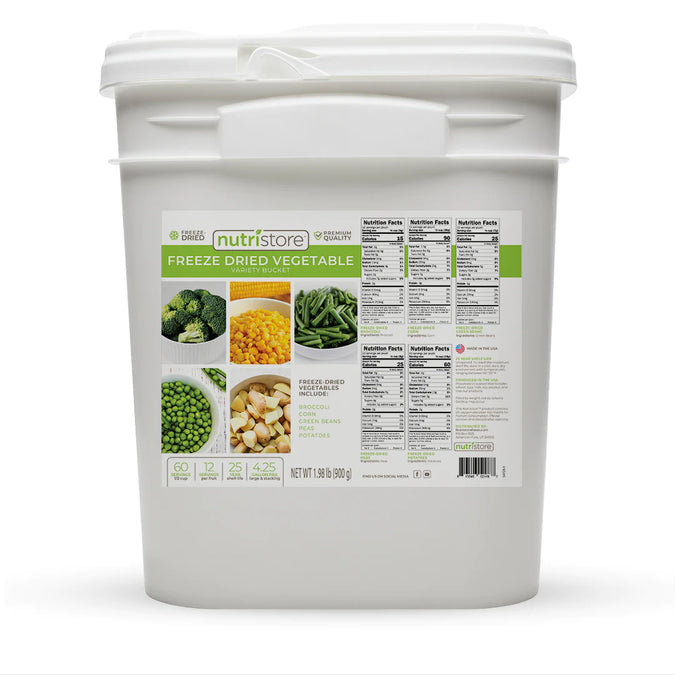
Are freeze-dried foods healthy?
Absolutely, freeze-dried foods retain most of their nutritional content, which makes them a healthy choice for many. The magic of freeze drying lies in its ability to preserve nutrients while significantly reducing the food's weight and volume. The removal of water ensures the food remains shelf-stable for an extended period without the need for artificial preservatives. I've found that the meals we offer at Canadian Preparedness provide a balanced mix of essential nutrients, which is vital whether you're in an emergency situation or out on a hiking adventure. However, like with any food, it's essential to look at the nutritional label to ensure the meal meets your dietary needs and preferences. Have you ever checked the nutritional information before buying your emergency food supplies?
What are the disadvantages of freeze-dried food?
While freeze-dried food has many benefits, there are a few drawbacks to consider. One potential disadvantage is the cost; freeze-drying is a complex process that can make these products more expensive than their canned or dehydrated counterparts. Additionally, some people find the texture of rehydrated freeze-dried meals not to be exactly like fresh food, although this varies from one product to another. In terms of preparation, you'll need to have access to clean water to rehydrate the food, which can be a limitation in some emergency scenarios. These considerations are important when deciding whether freeze-dried meals are the right choice for you. Have you tried rehydrating freeze-dried food before, and how did you find the experience?
What is the point of freeze-dried food?
The primary purpose of freeze-dried food is to offer a convenient, long-lasting, and nutritious solution for emergency preparedness and outdoor activities. The process of freeze drying extends the shelf life of food significantly without sacrificing much in terms of nutrient content. It's designed to be lightweight, which is perfect for backpacking or camping trips where every ounce matters. From my experience, having a reliable food source that requires minimal preparation and space can make a substantial difference in making sure you're ready for anything life throws your way. Why not consider adding some freeze-dried options to your emergency food supply?
Which type of food cannot be freeze-dried?
While freeze-drying is a versatile preservation method, not all foods can undergo this process effectively. Foods with high-fat content, like pure chocolate or peanut butter, don't freeze-dry well because fats don't evaporate like water does, leaving behind a texture that isn't ideal. Similarly, foods with a very high sugar content can become sticky or hard after freeze-drying. When it comes to creating balanced meals for emergency storage, it's crucial to choose foods that freeze-dry well, ensuring they maintain their quality and longevity. Have you ever wondered how different foods react to the freeze-drying process?
Why choose freeze-dried food for outdoor adventures?
Choosing freeze-dried food for outdoor adventures offers unparalleled convenience and practicality. As an avid hiker and camper myself, I've relied on these lightweight, compact meals to fuel my journeys without weighing me down. The simplicity of adding water to prepare a hot meal makes a significant difference after a long day on the trails. Whether you're trekking through rugged mountains or enjoying a leisurely camping trip, the range of flavors and nutrition packed into each meal can enhance your outdoor experience. What are your go-to meals when preparing for a camping trip?
How to store freeze-dried food effectively?
Proper storage is vital to maintaining the quality and longevity of freeze-dried food. To ensure your supplies remain fresh, keep them in a cool, dry place away from direct sunlight. Using airtight containers or vacuum-sealed bags can further protect against moisture and pests, which helps preserve the food's shelf life, often 25-30 years. I always recommend checking the storage conditions listed on the product packaging for the best results. Have you explored different storage solutions to optimize your emergency food reserves?
How does freeze-drying preserve nutritional content?
Freeze-drying is a remarkable method that preserves nutritional content by keeping the food's cellular structure intact. The process involves freezing the food rapidly and then using a vacuum to remove the ice as vapor, bypassing the liquid stage. This means that most vitamins and minerals remain as they are, unlike other preservation methods that often result in significant nutrient loss. I've seen firsthand how this can ensure that the meals we stock are not just long-lasting, but also nourishing. Have you ever delved into the science behind food preservation methods?

